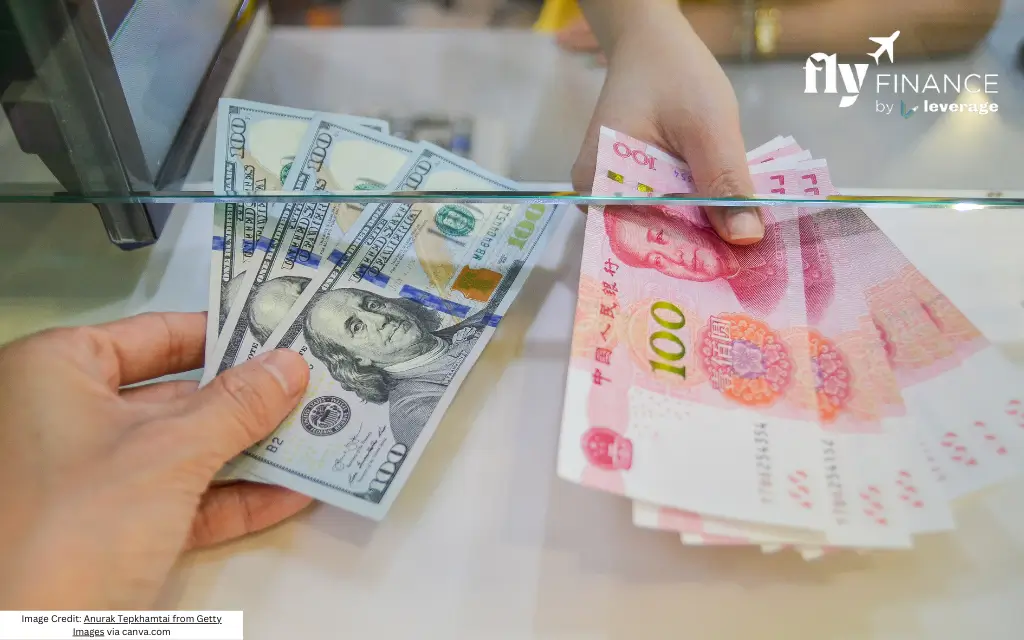Main difference between FERA and FEMA is that FERA was restrictive and focused on controlling foreign exchange, whereas FEMA is liberal and facilitates foreign exchange management. FERA was introduced in 1973 to strictly control foreign exchange and prevent its misuse whereas FEMA replaced FERA in 1999 to promote economic liberalization and facilitate foreign exchange transactions. FEMA provides a simplified framework for handling foreign exchange and securities, replacing the rigid restrictions of FERA. Unlike FERA, which focused on restriction, FEMA focuses on the legal regulation of foreign exchange transactions.
The Indian government has introduced various acts and policies to regulate its foreign exchange system, especially after independence. Two key pieces of legislation in this regard are the Foreign Exchange Regulation Act (FERA) of 1973 and the Foreign Exchange Management Act (FEMA) of 1999. Although both aim to manage foreign exchange in India, they differ significantly in their objectives, structure, and impact on the country’s economy. In this article, we will explore the various differences between FERA and FEMA, along with it, we will understand influence of FERA and FEMA on India’s economic landscape.
Table of contents
Difference Between FERA and FEMA
FERA (Foreign Exchange Regulation Act) and FEMA (Foreign Exchange Management Act) are two important laws in India that deal with foreign exchange transactions. FERA focused on controlling foreign exchange to prevent foreign capital outflow whereas FEMA allows free movement of foreign currencies while ensuring legal compliance.
Check out the key differences between FERA and FEMA based on various factors in the table given below:
| Particulars | FERA | FEMA |
| Full Form | Foreign Exchange Regulation Act | Foreign Exchange Management Act (FEMA Act, 1999) |
| Year of Enactment | Passed in 1973, enforced from 1st Jan 1974 | Passed in 1999, enforced from 1st Jun 2000 |
| Primary Objective | Regulating foreign payments and conserving forex | Enhancing foreign payments and trade |
| Nature of Regulations | Conservative and restrictive | Liberal and flexible |
| Residential Status | Determined by a 6-month stay in India | Determined by a 182-day stay in India |
| Violations | Considered criminal offences | Considered civil offences |
| Penalty | Imprisonment for violations | Monetary fines, imprisonment for non-payment |
| Sections | Consisted of 81 sections | Consists of 49 sections |
| Role of RBI | Pre-approval required for forex transactions | No pre-approval is required for transactions |
| IT Provisions | Absent | Included |
| Legal Assistance | No assistance allowed | Legal assistance permitted |
| Appeals | Appeals made to the Supreme Court | Special courts and directors handle appeals |
FERA and FEMA
FERA was based on the premise that foreign exchange and securities are national assets that need strict control. FEMA brought a liberalized framework to manage foreign exchange transactions, aligning with India’s globalization and economic reforms. Under FERA, external trade and payments were heavily monitored and restricted. Unlike FERA, FEMA does not control foreign exchange in a restrictive manner but regulates it to support economic growth. By replacing FERA, FEMA has enhanced India’s ease of doing business, promoting a more investor-friendly environment.
What is FERA?
The full form of FERA is the Foreign Exchange Regulation Act, which was introduced in 1973. The primary objective of FERA was to conserve foreign exchange and regulate foreign investments to protect India’s economic interests. The act aimed to control transactions affecting foreign exchange to prevent misuse during a period of economic instability.
FERA had 49 sections, each aimed at controlling foreign exchange and restricting unauthorized transactions. FERA had several key objectives:
- Regulating foreign exchange and securities dealings.
- Controlling the import and export of currencies and bullion (refers to gold or silver, typically in the form of bars, ingots, or coins, that is used as a store of value or for trade purposes.).
- Restricting employment of foreign nationals in sensitive sectors.
- Governing acquisition and holding of immovable property in India by non-residents.
- Monitoring transactions indirectly affecting foreign exchange reserves.
While FERA helped stabilise foreign exchange during its time, its rigid and conservative approach became a hurdle for India’s economic growth, leading to its eventual replacement.
The Foreign Exchange Regulation Act (FERA), implemented in 1973, had several drawbacks:
- Strict Regulations: FERA imposed rigid rules on foreign exchange, limiting international trade and investment.
- Limited Foreign Investment: It restricted foreign capital inflows, hindering business growth.
- Excessive Government Control: The government had too much control, reducing flexibility for businesses.
- Economic Hindrance: The stringent rules created uncertainty, slowing down economic growth.
- Harsh Penalties: Severe penalties for violations led to unfair consequences for minor infractions.
What is FEMA?
The full form of FEMA is the Foreign Exchange Management Act, which was enacted in 1999, replacing FERA. FEMA was introduced to facilitate external trade and payments, making foreign exchange transactions more flexible. With FEMA in place, the Indian economy has experienced increased foreign investments and improved global financial integration.
Foreign exchange rules for NRIs under FEMA are very strict. The exchange management act FEMA ensures compliance with international financial regulations while supporting India’s trade and economic expansion. FEMA promotes a regulated yet open foreign exchange market. The objectives of FEMA are more progressive compared to its predecessor:
- Facilitating external or International trade and payments.
- Promoting orderly growth and maintenance of India’s foreign exchange market.
- Introducing transparent and flexible regulations.
- Supporting international trade and capital flow with modern guidelines.
By adopting a more business-friendly approach, FEMA provided the groundwork for India’s economic liberalization and integration with global markets. FEMA Guidelines for Outward Remittance are also managed by RBI so that foreign exchange laws are followed strictly.
Also Read: Many students from low-income families benefit from schemes on Education Loan. Learn about the benefits of Interest Subsidy Schemes on Education Loans in our blog.
FEMA and FERA Guidelines for International Students
When planning to study abroad, Indian students must follow the Foreign Exchange Management Act (FEMA) guidelines to manage international money transfers. FEMA regulates the remittance of funds for educational purposes, ensuring compliance with Indian laws. And all students must be aware of how to fix FEMA violations if they committed any violation by mistake or else.
- Eligibility for Remittance: Indian students admitted to recognized foreign institutions can remit funds for tuition fees, living expenses, and other related costs.
- Remittance Limits: Students can remit up to USD 250,000 per year under the Liberalized Remittance Scheme (LRS) for educational purposes.
- Sources of Funds: Funds must come from the student’s account or that of immediate family members. Proof of the relationship is required if funds are from family members.
- Mode of Remittance: Remittances must be made through authorized dealers (banks or financial institutions) using official channels like wire transfers or demand drafts.
- Required Documentation: Students need to provide:
- Admission proof
- Estimated expense
- Passport and visa details
- Source of funds declaration
- Special Provisions for Medical Students: Medical students may face higher education-related expenses, especially in countries like the US or Russia, and may need to remit larger amounts through foreign outward remittance under the existing limits.
Also Read: Current Account Transactions Under FEMA
Why Was FERA Replaced by FEMA?
The replacement of FERA with FEMA was a response to the changing needs of India’s economy. As globalization progressed, FERA’s stringent rules became a barrier to India’s participation in global markets. The 1991 economic reforms, which aimed at liberalizing the Indian economy, called for a more open and adaptable foreign exchange framework. The development of the Foreign Exchange Regulation Act (FERA) was driven by the need to restrict unauthorized dealings in foreign currencies.
FEMA was introduced to address this need, offering more flexible regulations that supported foreign investments and facilitated international trade. These differences between FERA and FEMA were crucial in promoting economic growth and integrating India more effectively into the global economy.
Impact of FEMA on the Indian Economy
Understanding the differences between FERA and FEMA acts provides valuable insights into India’s evolving economic policies and their impact on the global stage. For students, these distinctions are crucial for grasping the broader narrative of India’s economic development. FEMA’s introduction marked a significant shift in India’s economic policies. Its liberal approach has:
- Boosted foreign investments and trade.
- Improved India’s foreign exchange reserves.
- Enhanced transparency and governance in forex transactions.
- Encouraged businesses to expand their global footprint.
Practical Implications of FERA vs FEMA on India’s Economy
The transition from FERA to FEMA brought significant changes to India’s economic framework. This shift redefined regulations, impacting businesses, encouraging foreign investments, and boosting economic growth. By examining the practical implications of FERA and FEMA, we can better understand how these changes shaped India’s financial and trade landscape. Let’s explore them one by one.
- Economic Growth
FERA’s restrictive policies were effective during periods of economic crises but hampered growth as the economy opened up. FEMA’s liberal policies fostered foreign investments, facilitating India’s integration into the global market. - Legal Framework
FERA’s strict penalties often deterred foreign investors. In contrast, FEMA’s flexible legal framework encourages compliance and smooth operations, contributing to a positive business environment. - Ease of Transactions
Under FERA, conducting foreign exchange transactions involved bureaucratic hurdles. FEMA simplified processes, making India a more attractive destination for international trade and investment.
FERA and FEMA are milestones in India’s journey of foreign exchange management. While FERA laid the groundwork during a challenging economic phase, FEMA reflects India’s commitment to economic liberalization.
Conclusion: FERA vs FEMA
The transition from FERA (Foreign Exchange Regulation Act, 1973) to FEMA (Foreign Exchange Management Act, 1999) marked a significant shift in India’s economic policies. FERA was a strict and restrictive law aimed at controlling foreign exchange to protect India’s limited reserves, unlike FERA, FEMA was introduced to regulate foreign exchange in a more liberalized and growth-oriented manner.
FEMA replaced FERA to align India’s economy with global financial standards, making foreign exchange transactions easier and encouraging external trade and payments. Unlike FERA, which imposed criminal penalties for violations, FEMA treats non-compliance as a civil offense, making it more business-friendly.
By allowing greater participation in the foreign exchange market, FEMA has contributed to economic growth, foreign investments, and a more open financial system. This shift has strengthened India’s position in the global economy while ensuring compliance with foreign exchange regulations.
Overall, while FERA focused on restriction and conservation, FEMA promotes regulation and development, making it a crucial reform for India’s financial landscape.
FAQs on the Difference Between FERA and FEMA
The key difference between FERA and FEMA is their approach: FERA (1973) was restrictive, focusing on regulating foreign exchange, while FEMA (1999) promotes liberalization, facilitating international payments and trade to support the development of India’s foreign exchange market.
FEMA (Foreign Exchange Management Act) deals with regulating foreign exchange transactions and maintaining the foreign exchange market, while FCRA (Foreign Contribution Regulation Act) regulates the acceptance of foreign funds by organizations, specifically NGOs, to ensure that foreign contributions do not influence national interest or public policy.
FEMA replaced FERA to modernize and liberalize India’s foreign exchange policy. While FERA was restrictive and aimed at controlling foreign exchange transactions, FEMA was designed to promote economic growth, streamline external payments, and integrate the country with global financial markets.
FEMA is a regulatory framework governing foreign exchange transactions, while FDI (Foreign Direct Investment) refers to investments made by foreign entities or individuals in the business and economic sectors of a country. FEMA governs the inflow and outflow of foreign currency, including FDI.
FEMA (Foreign Exchange Management Act) is an Indian law enacted in 1999, aimed at facilitating foreign exchange transactions, promoting economic growth, and regulating payments and foreign exchange market operations in India.
FERA was used to circulate and implement foreign exchange transactions, control the flow of foreign currency into the country, and prevent any misuse of foreign funds that could harm India’s economy and sovereignty. It focused on restricting foreign exchange dealings to safeguard the national economy.
FEMA rules refer to the guidelines and provisions framed under the Foreign Exchange Management Act, of 1999. These rules govern foreign exchange transactions, cross-border payments, and dealings in foreign securities, ensuring that these activities align with India’s economic objectives.
FCRA regulates the receipt of foreign contributions by organizations, mainly NGOs, and ensures that foreign funds are used for purposes that do not affect national interest. On the other hand, FDI involves foreign investments in Indian businesses and enterprises, contributing to economic growth and job creation.
Foreign exchange exposure refers to the potential for a business or individual to be affected by changes in foreign exchange rates. Foreign exchange risk, however, is the potential for financial loss due to fluctuations in currency values. Exposure indicates the level of involvement in foreign exchange, while risk is the potential consequence of such involvement.
The new name of FERA is FEMA (Foreign Exchange Management Act), which replaced FERA in 1999 with a more liberal approach to managing India’s foreign exchange market.
The primary aim of FEMA is to promote the orderly development and regulation of foreign exchange markets in India, ensure the smooth functioning of International trade and payments, and support the country’s economic growth by facilitating foreign exchange transactions.
The purpose of FEMA is to manage and regulate foreign exchange transactions in India, facilitate external trade and payments, and provide a framework for dealing with foreign exchange markets while ensuring the stability and growth of the country’s economy.
To learn more about forex, education loans, the best bank accounts for students, banking experience for global students, or international money transfers, reach out to our experts at 1800572126 to help ease your experience with studying abroad.
Follow Us on Social Media






























wants to borrow around 1.5 cr from my son, an NRI for purchase of a property in my name by remittance to my S.B. account. son not having any NRE/ NRO account. what restrictions under FEMA applies